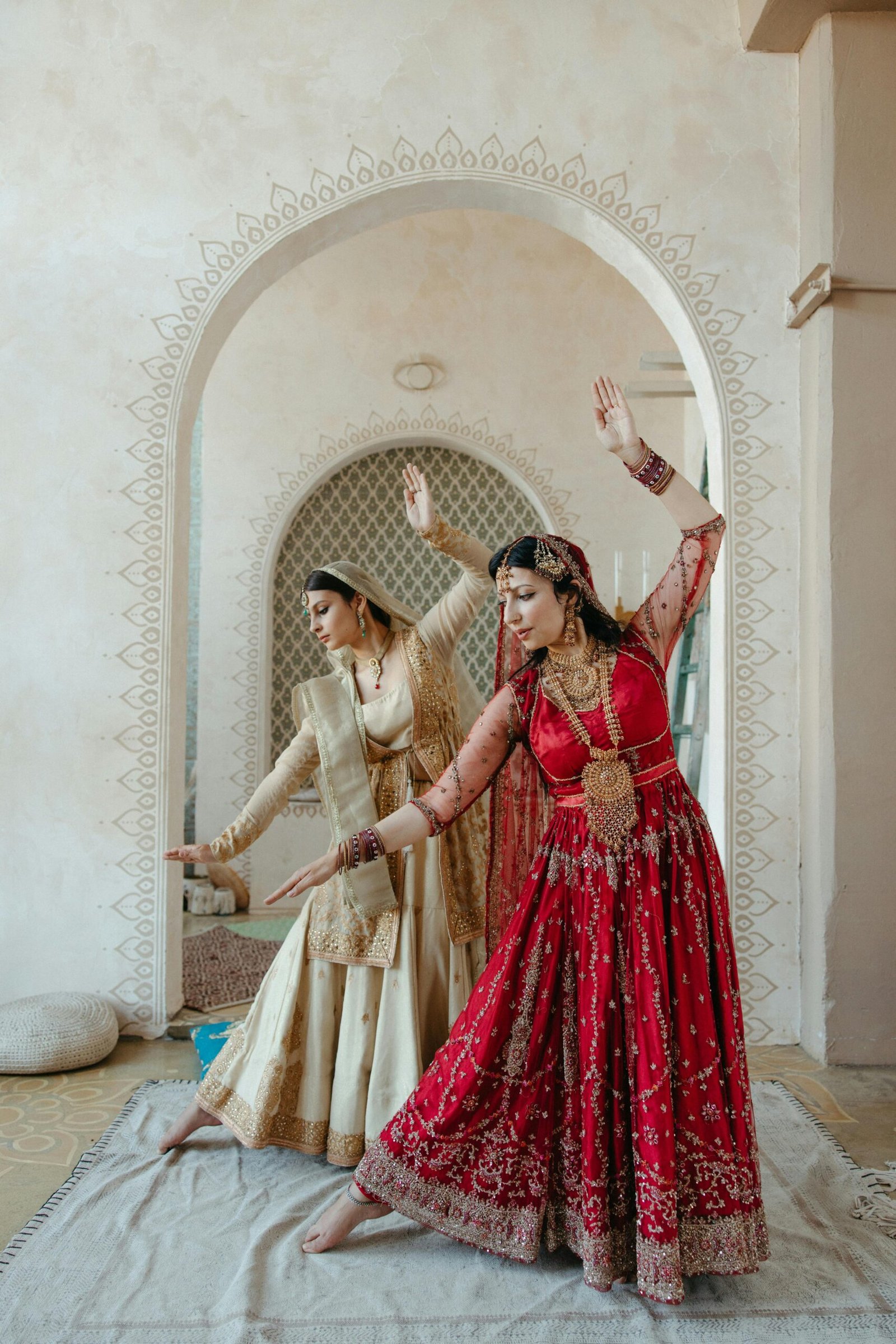
INDIAN FOLK DANCE
India is a vibrant mosaic of the world's most diverse cultures and traditions, enriched with a stunning array of dance forms. In this enchanting land, the dialect transforms almost every 100 kilometers, bringing with it a shift in folk dance styles, costumes, artists, and more. India, blessed with six distinct seasons, boasts dances for each one, with nearly every state celebrating the time of harvest through its unique dance. These folk dances serve as profound expressions, performed to convey the happiness, sorrow, and varied moods of society and community. Over the years, these dances have evolved, becoming an integral part of Indian culture, adding layers of uniqueness and novelty.

INDIAN CLASSICAL DANCE - KATHAK
Kathak is a revered classical dance form from North India, with roots tracing back to the ancient art of storytelling, as indicated by its name derived from the word "Katha." Some believe that Kathak evolved from "Raas Nritya," pioneered by Lord Krishna, also known as Natwar, hence Kathak is also referred to as "Natwari Nritya." Originally performed in temples, Kathak experienced a significant transformation following the Mughal invasion, which led to the destruction of many temples in North India. Consequently, Kathak moved from its devotional roots in temples to the courts of the Mughal emperors, shifting its focus from divine worship to royal entertainment. This transition brought about major changes in the dance form, including the incorporation of intricate spins and rapid footwork. The emphasis shifted from "Bhakti Ras" (devotional sentiment) to "Shringar Ras" (romantic and aesthetic sentiment). After India gained independence, esteemed Kathak maestros meticulously redefined the dance style, blending the purity of Natwari Nritya with the influences from the Mughal era. Today, Kathak stands as a highly developed and graceful dance form, complete and sophisticated in its execution.

SEMI CLASSICAL
Drawing inspiration from the legendary icons of Bollywood, we explore how classical and traditional folk Indian dance styles have profoundly influenced Bollywood dance. Semi-Classical Bollywood dance harmoniously blends the classical foundations with a contemporary flair, offering the best of both worlds. This dance style emphasizes storytelling, femininity, and grace, while skillfully incorporating playful rhythms and controlled expressions. It creates a captivating and dynamic performance that beautifully bridges the traditional and modern aspects of Indian dance.

FREE STYLE BOLLYWOOD
Freestyle Bollywood dance is a vibrant fusion of diverse Indian dance traditions and music. In classic films, Bollywood dances often depicted the folk dances of common people, blending Middle Eastern techniques or showcasing pure classical forms. Over time, this dance style has evolved, incorporating various folk, classical, and Western dance styles from around the globe. This dynamic adaptation reflects cultural shifts and has resulted in a rich, eclectic form of expression. Today, Bollywood dance and music exert a significant influence on contemporary generations and artists worldwide, showcasing the enduring and global appeal of this art form.

